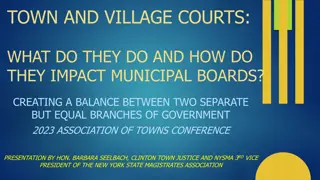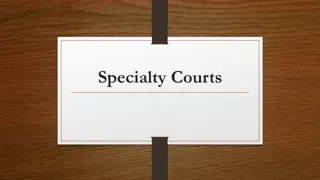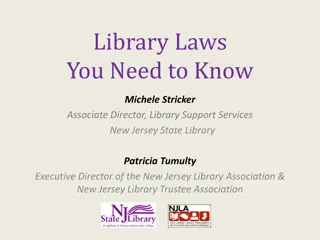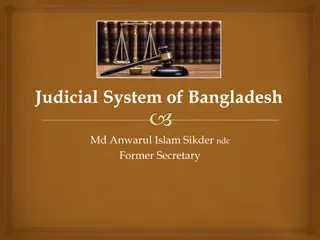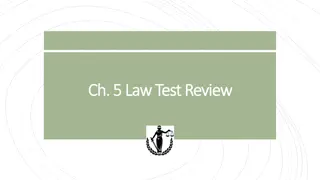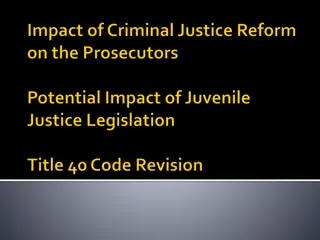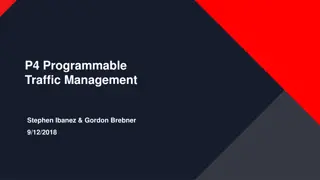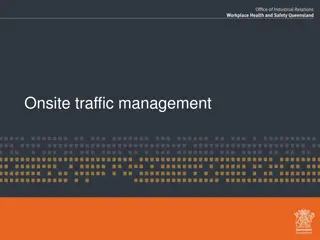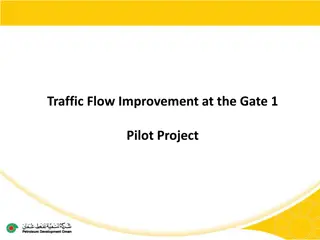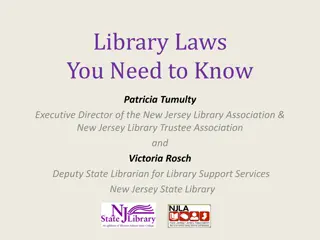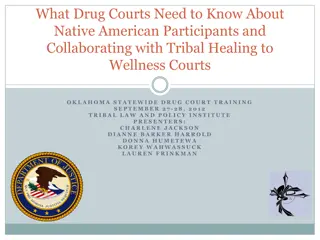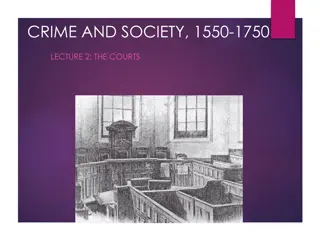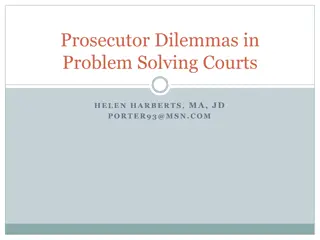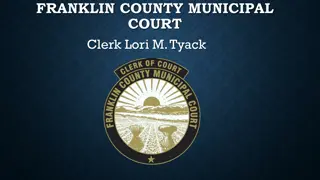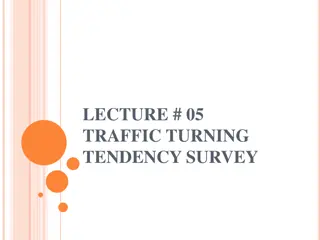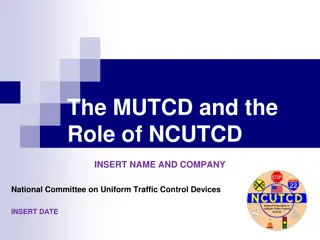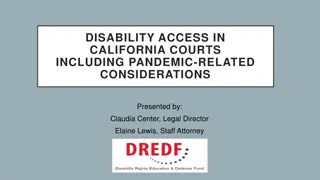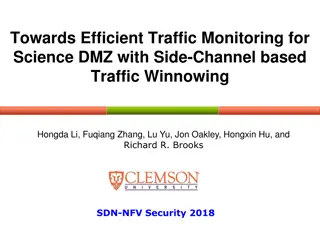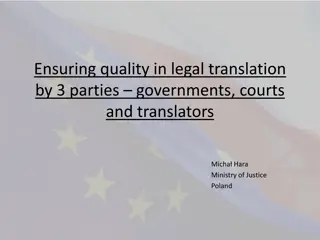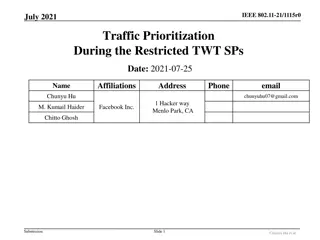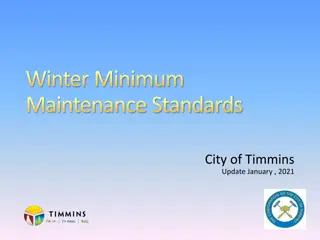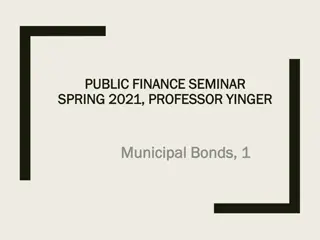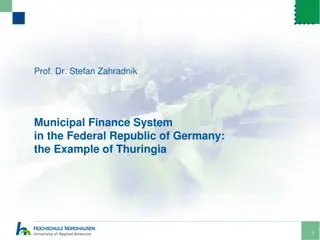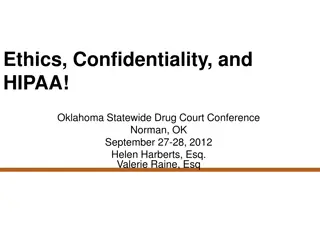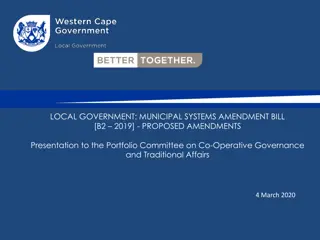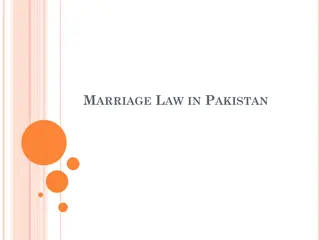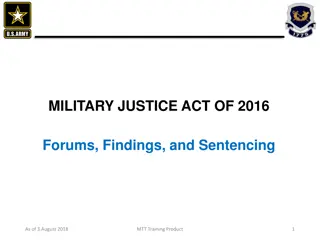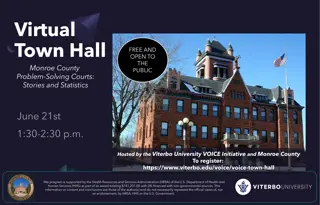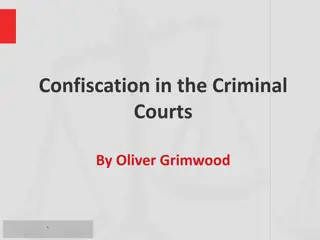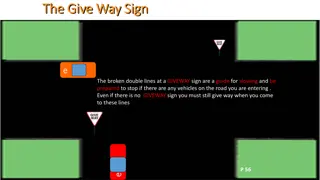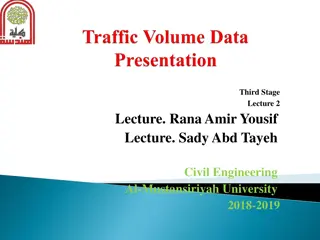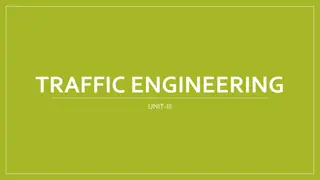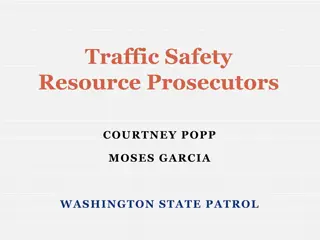Understanding Municipal Courts and Traffic Laws
Explore the functions of a Municipal Court, the role of a Municipal Judge, jurisdiction over criminal misdemeanors and traffic offenses, importance of enforcing traffic laws, defendant's options in a trial, the right to a jury trial, and the concept of impartiality in legal proceedings.
Download Presentation

Please find below an Image/Link to download the presentation.
The content on the website is provided AS IS for your information and personal use only. It may not be sold, licensed, or shared on other websites without obtaining consent from the author. Download presentation by click this link. If you encounter any issues during the download, it is possible that the publisher has removed the file from their server.
E N D
Presentation Transcript
Name Municipal Court (Judge/Administrator/Clerk) City of Blank JURY TRIALS AND TRAFFIC SAFETY 1
Introduction Municipal Judge Appointed or Elected Public Officer Judicial Powers or Abilities To hear facts To decide To render judgment To execute the judgment 2
Jurisdiction Criminal misdemeanors punishable by fine only No confinement Criminal municipal ordinance cases What types of offenses or crimes can you think of that would fall under these categories? 3
Traffic Offenses 7.85 million new cases filed in municipal court each year 6.5 million of those cases were traffic cases About 83% of municipal court cases are traffic cases Why is it important to enforce our traffic laws? 4
Vehicular Homicide Vehicular Assault Reckless Driving Speeding 5
Defendants Options Pay it Driving Safety Course Deferred Disposition Plea Not Guilty Go to Trial Bench Trial Jury Trial 6
The Right to a Jury Trial Everyone has a right to a trial by an impartial jury U.S. Constitution 6th Amendment Texas Constitution Article I, Section 10 Code of Criminal Procedure Articles 1.05 and 1.12 7
Impartial Favoring neither; disinterested; treating all alike; unbiased; equitable, fair, and just 8
Form Your Juries Divide into groups of 6, as nearly as possible 9
The Charge The Defendant, stands charged by Complaint with the offense of "Speeding, to which charge the Defendant has pleaded "Not Guilty." A person commits an offense if that person operates a motor vehicle on a public street or highway at a speed in excess of the posted speed limit. 10
The Facts The police officer pulled over the defendant for speeding saying that the speed detection device showed defendant to be traveling 51 mph in a 40 mph speed zone. Defendant was issued a citation, and later entered a plea of not guilty. More specific evidence and information is available in your jury packet. 11
The Punishment Range A person guilty of this offense shall be punished by a fine of not less than one dollar ($1.00) nor more than two hundred dollars ($200.00). 12
Deliberations Read your jury charges You are the exclusive decision-makers The burden of proof is on the State Defendant is not required to prove innocence or produce any evidence at all You are not to talk about this case with any person not of your jury Take 10 minutes or so and come up with a conclusion Guilty or not guilty If guilty, what is the fine? 13
Judgment and Sentence Was the defendant guilty? If so, what fine did you assess? Bring back your judgment form to me 14
Group #1 15
Group #2 16
Group #3 17
Group #4 18
Group #5 19
Discussion Why did you decide as you did? Why do you think there were different results? Would you have come to a different decision without a picture? Do you see the importance of a judge and jury and the difficulty of their job? 20
Thank You for Your Time! Contact information Name Court Address Email address 21


